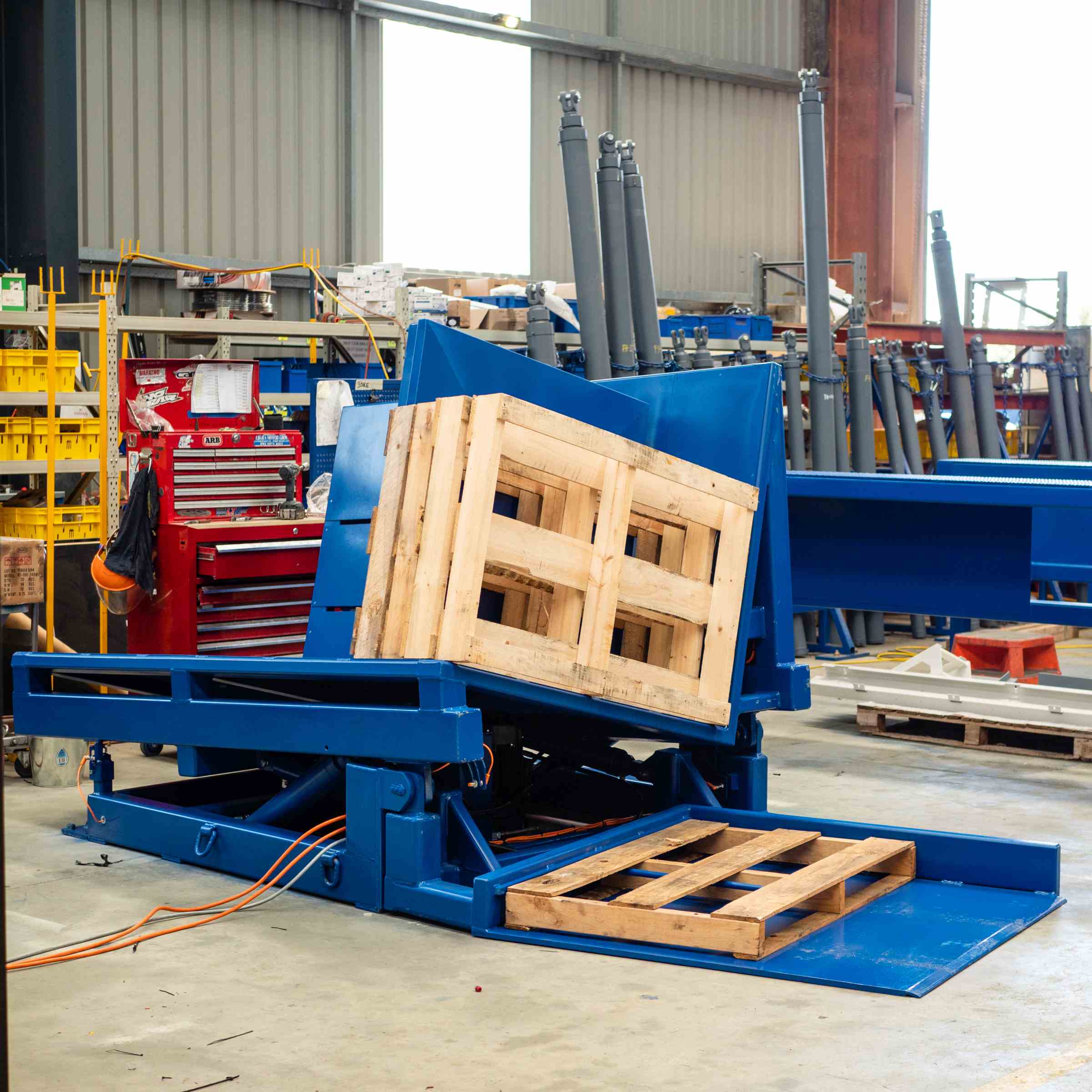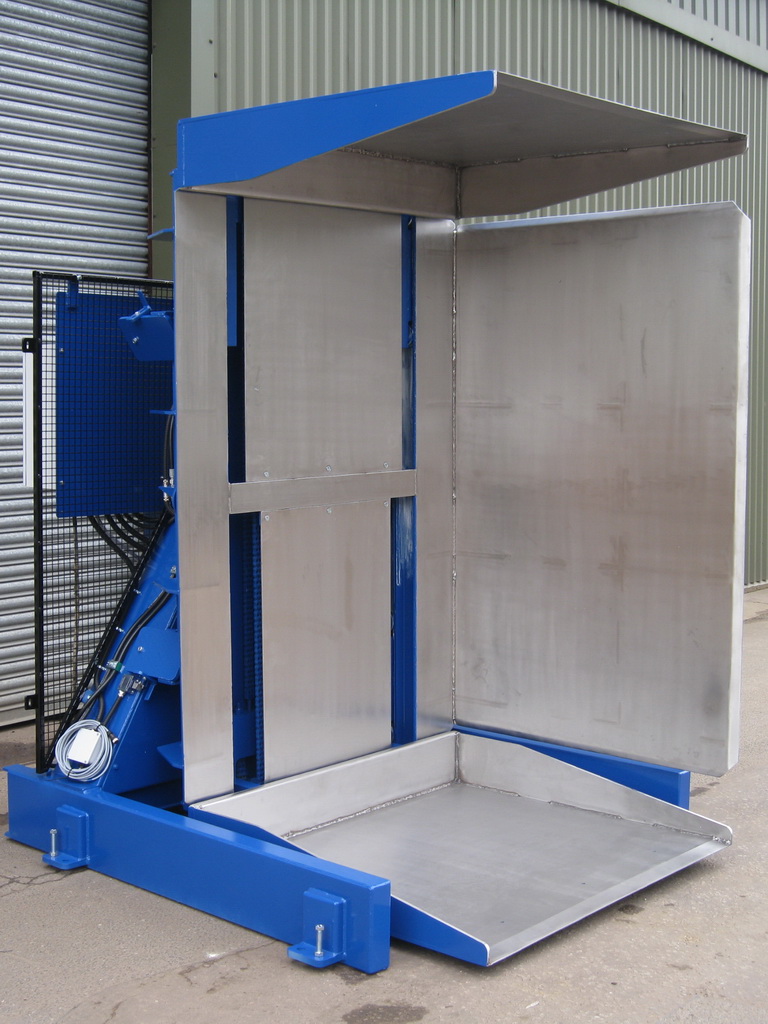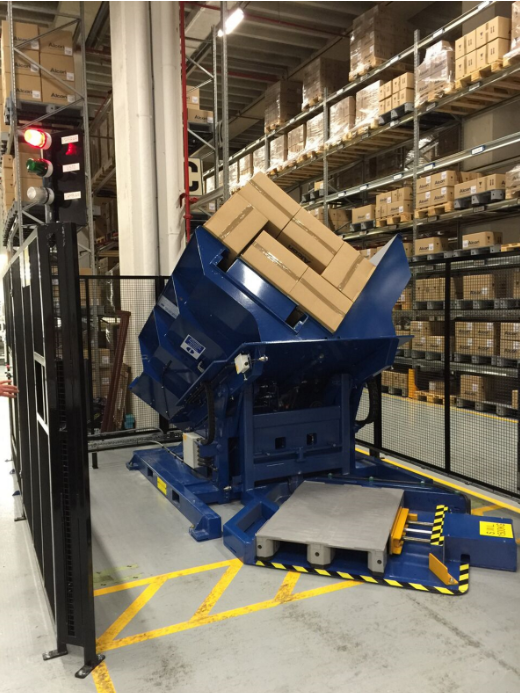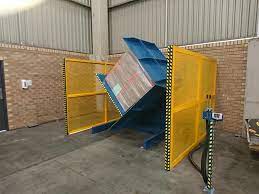Choosing the Right Pallet Inverter for Romania's Demands in Cost-Competitive Pallet Systems for Logistics Hubs
Running a busy logistics hub comes with a unique set of pressures. You are constantly juggling tight schedules, managing diverse cargo, and trying to keep operational costs from spiraling out of control. A common headache is dealing with pallets. Your customer wants their goods on a specific type of pallet, but your internal system uses another. This forces you into slow, costly, and sometimes risky manual restacking, or paying high fees for rental pallets. It’s a persistent problem that chips away at your efficiency and your bottom line, creating a bottleneck that can bring a fast-paced operation to a halt.
The best way to choose the right pallet inverter for Romania's demanding and cost-competitive logistics hubs is to focus on three core areas: the machine's load capacity, its operational speed or cycle time, and the flexibility of its clamping system. A 180-degree hydraulic pallet inverter with adjustable clamping pressure and a capacity of at least 1500kg typically offers the best balance of performance, versatility, and cost-effectiveness. This type of machine can handle a wide variety of goods, from fragile boxes to robust materials, making it an ideal investment for the diverse needs of a modern logistics center.

I've spent my entire career in the packing machine industry, first as an engineer on the factory floor and later as the founder of my own company, SHJLPACK. I’ve seen firsthand how a single piece of equipment can transform an entire operation. A pallet inverter seems like a simple machine, but making the right choice is critical. It's not just about buying a piece of steel; it's about investing in a solution that will save you money, protect your goods, and make your team's life easier. Let’s break down how to make a smart decision that pays dividends for years to come.
How does a pallet inverter directly address cost pressures in Romanian logistics hubs?
In a competitive market like Romania, every cent counts. You face constant pressure on your operating costs, from the price of fuel to the cost of labor. You might be spending a small fortune on renting specialized pallets from services like CHEP or LPR just to satisfy a few key clients. Or, you might have a team of workers spending hours manually moving boxes from one pallet to another. This manual process is not only slow and expensive but also significantly increases the risk of product damage and worker injury. These seemingly small, recurring costs add up, eating into your profit margins and making it harder to compete.
A pallet inverter directly attacks these cost centers and provides a clear return on investment. It empowers you to switch loads from expensive rental pallets to your own cheaper, in-house pallets before shipping, or vice-versa for incoming goods. This single capability can slash your pallet rental fees. Furthermore, it transforms a time-consuming manual task that takes multiple workers into a quick, one-person job that takes only a minute or two. This frees up your workforce for more value-added tasks and drastically cuts labor costs associated with pallet handling. By mechanizing the process, you also ensure a secure, controlled transfer, which minimizes the risk of dropping or damaging products.

Breaking Down the Cost Savings
When I work with clients, I always encourage them to look beyond the initial purchase price of a machine. The real value is in the long-term operational savings. A pallet inverter is a perfect example of this principle. Let's look at the specific areas where you will see a financial impact. The goal is to turn hidden expenses into visible savings. Many of my clients, especially those in high-volume industries, are aiming to reduce overall operating costs by 8% or more. A pallet inverter is a practical tool to help achieve that goal.
First, consider your pallet costs. If you rely on rental pallets for outbound shipments, you are paying a constant fee. By using a pallet inverter, you can transfer goods to a much cheaper one-way shipping pallet. The cost difference can be significant. If you handle hundreds of pallets a day, the savings accumulate very quickly.
Second, there is the issue of labor. Manual restacking is inefficient. It requires at least two workers and can take a long time, depending on the load. An inverter needs only one operator and completes the cycle in about 60 seconds. This is a massive productivity gain. Your team can be reallocated to other important tasks like picking, packing, or quality control.
Third, product damage is a real cost. Every time a product is handled manually, there is a risk of it being dropped or damaged. A pallet inverter clamps the load securely before rotating it. This controlled movement is much safer for your products. I remember a client in the beverage industry who was losing thousands of Euros a month from broken bottles during manual transfers. A pallet inverter eliminated almost all of that loss overnight.
Here is a simple comparison:
| Cost Factor | Manual Restacking | Using a Pallet Inverter |
|---|---|---|
| Pallet Costs | High due to rental fees or expensive pallets. | Low. Use cheap one-way pallets for export. |
| Labor Costs | High. Requires 2-3 workers for 10-15 minutes. | Low. Requires 1 operator for 1-2 minutes. |
| Product Damage | High risk from repeated manual handling. | Minimal risk due to secure, mechanized transfer. |
| Operational Speed | Very slow, creates bottlenecks in workflow. | Very fast, streamlines the logistics chain. |
What are the key technical specifications to evaluate for a cost-competitive system?
You have decided that a pallet inverter is a smart investment. Now you face a new challenge: choosing the right one. The market is filled with different models, each with its own list of technical specifications. You will see terms like load capacity, clamping range, cycle time, and different types of control systems. It can feel overwhelming. If you choose a machine that is too small or weak for your needs, it will lead to frequent breakdowns and operational failures. If you choose a machine that is far more powerful and complex than you need, you have wasted precious capital that could have been used elsewhere in your business. The key is to find the perfect balance between capability and cost.
For a cost-competitive system in a place like a Romanian logistics hub, you must focus on the specifications that deliver the most value for your specific operation. The most important specs to analyze are the maximum load capacity, the range and type of the clamping system, and the machine's cycle time. You must ensure the capacity is higher than your heaviest pallet load. You need a clamping system that can handle your most fragile products without causing damage, yet still be strong enough for the heaviest loads. And the cycle time must be fast enough to keep up with your desired throughput. Getting these three things right is 80% of the battle.

Matching Specifications to Your Operational Reality
Choosing the right technical specifications is about deeply understanding your own workflow. Don't just look at a brochure; think about your heaviest, lightest, widest, and most awkwardly shaped pallets. This practical analysis ensures you buy what you actually need.
Load Capacity and Construction
The load capacity is the most basic specification. A standard machine will often handle 1000kg to 1500kg, which is sufficient for most general goods. However, you should always choose a capacity that is at least 20% higher than your heaviest expected load. This provides a safety margin and reduces stress on the machine's components, leading to a longer life. In my past work with steel coil packing, we dealt with extremely dense and heavy loads. This taught me the importance of robust construction. Look for a machine built with thick, high-quality steel. The machine's weight can be a good indicator of its durability. A heavier, well-built machine will be more stable and reliable over years of service.
Clamping System and Flexibility
The clamping mechanism is where the machine interacts with your product. This is a critical detail. Most cost-effective, heavy-duty inverters use a hydraulic system, which provides strong and consistent pressure. The most important feature here is adjustable clamping pressure. If you handle a variety of goods—from sturdy canned goods to fragile electronics—you need to be able to change the pressure. Too much pressure will crush your products; too little will cause the load to shift during rotation. A simple pressure gauge and a manual valve can provide this functionality without adding excessive cost.
Cycle Time and Control System
Cycle time is the total time it takes for the machine to complete one operation. For most semi-automatic inverters, this is between 45 and 90 seconds. You need to calculate if this speed meets your throughput requirements. If you need to invert 40 pallets per hour, a machine with a 90-second cycle time is a good fit. For the control system, simple is often better for cost-effectiveness. A basic push-button control panel is reliable, easy for operators to learn, and has fewer components that can fail. While fully automated PLC systems are available, they add significant cost and complexity. For most logistics hubs, a robust, semi-automatic system offers the best return on investment.
Here's a guide to help you think through it:
| Specification | Why It Matters for Cost-Effectiveness | My Recommendation for a Logistics Hub |
|---|---|---|
| Load Capacity | Prevents overload and premature failure. | Choose a model rated for 20-25% above your heaviest load. 1500kg is a good standard. |
| Clamping Pressure | Adjustable pressure prevents product damage. | Must be adjustable. A hydraulic system with a visible pressure gauge is ideal. |
| Cycle Time | Must match your operational throughput needs. | A 60-90 second cycle time is sufficient for most applications and keeps costs down. |
| Loading Style | Determines how you interact with the machine. | Floor-level loading is versatile as it can be accessed by both pallet jacks and forklifts. |
| Control System | Simpler systems are cheaper and more reliable. | A simple push-button panel is best for reliability and ease of use. |
How important are safety and maintenance features for long-term ROI?
When you are focused on cost, it can be tempting to look at the initial price tag as the most important factor. You might see two machines that perform the same basic function, but one is cheaper because it lacks advanced safety or maintenance features. Choosing the cheaper option can feel like a smart business decision. But this is a dangerous trap. What happens when that machine inevitably breaks down during your busiest month? Or even worse, what if the lack of safety features leads to a serious accident in your facility? The costs associated with downtime, emergency repairs, and workplace accidents can quickly erase any initial savings and severely damage your business.
Safety and maintenance features are not optional extras; they are fundamental to achieving a positive long-term return on investment (ROI). A machine that runs safely and reliably day after day is a true asset. Safety features like light curtains and perimeter fencing don't just protect your people; they protect your entire operation from the massive disruption an accident can cause. Likewise, features that simplify maintenance—like centralized lubrication points or high-quality components—reduce downtime and lower the lifetime cost of ownership. Thinking about safety and maintenance upfront is one of the most financially sound decisions you can make.

Building a Business Case for Safety and Reliability
I learned a valuable lesson early in my career when running my own factory. We tried to save money on a critical piece of equipment by choosing a model with lower-grade components. It worked fine for about a year, and then a key hydraulic hose burst. It shut down one of our main lines for two full days while we scrambled to find a replacement part. The cost of that lost production was ten times what we had "saved" on the initial purchase. That experience taught me to view safety and reliability not as costs, but as insurance.
Essential Safety Features
In a busy logistics hub, you cannot compromise on safety. Look for these non-negotiable features:
- Perimeter Fencing: This creates a physical barrier around the machine, preventing personnel from accidentally walking into the operational area.
- Interlocked Gates: The gates on the fence should have safety switches. If a gate is opened, the machine must immediately stop. This ensures no one can enter while it is in motion.
- Light Curtains: These are infrared beams that create an invisible safety barrier at the loading/unloading point. If an operator or object breaks the beam while the machine is active, it will instantly shut down. This is crucial protection.
- Emergency Stop Buttons: These must be clearly visible and easily accessible from all sides of the machine.
Features That Simplify Maintenance
Downtime is the enemy of profitability. Good design can minimize it.
- High-Quality Components: Insist on knowing the brand of the hydraulic power pack, seals, and electrical components. Reputable brands are far more reliable.
- Easy Access: Service points, like motors and hydraulic valves, should be easy to access without having to disassemble the entire machine.
- Centralized Lubrication: This small feature makes a huge difference. It allows a technician to lubricate all the key joints from a single point, saving time and ensuring no spots are missed.
Investing in these features increases uptime, which is a key goal for any serious operational manager. It's directly linked to achieving goals like 95% equipment availability through predictive and preventative maintenance.
| Feature | Short-Term Cost | Long-Term ROI (Benefit) |
|---|---|---|
| Light Curtains | Moderate additional cost. | Prevents severe accidents, eliminating potential for huge legal and operational costs. |
| High-Quality Hydraulics | Small price premium. | Drastically reduces breakdowns, unplanned downtime, and repair costs. |
| Centralized Lubrication | Minimal additional cost. | Ensures proper maintenance is done quickly, extending machine life and preventing wear. |
Beyond the Machine: Why Your Supplier Relationship is the Real Key to Success?
Let's say you've done all your homework. You have analyzed your costs, identified the perfect technical specifications, and selected a machine with excellent safety features. You've found the perfect pallet inverter on paper. But what happens after you sign the purchase order? A machine, no matter how good, is only one part of the equation. If your supplier disappears after they have your money, you are left alone to figure out complex installation, train your operators, and troubleshoot problems. A small technical issue can become a major operational crisis if you don't have the right support.
The most successful and profitable equipment investments I have ever been a part of were built on a strong partnership between the client and the supplier. A simple transaction gets you a machine. A true partnership gets you a total solution and peace of mind. You should be looking for a partner who is invested in your success, who will guide you through the entire process, and who will be there to support you for the entire life of the machine. This relationship is often more valuable than the physical hardware itself. It’s the difference between buying a tool and gaining a capability.

The Difference Between a Supplier and a Partner
My journey from being an employee in a factory to running my own has shown me both sides of this relationship. I remember the frustration of dealing with suppliers who didn't understand our process and just wanted to make a quick sale. I also remember the immense value of working with partners who took the time to listen and offer real expertise. This is the entire philosophy behind SHJLPACK. I built this company to be the kind of partner I always wished I had. We don't just sell wrapping and handling equipment; we share our knowledge to help you find the right solution.
Here’s what that partnership approach looks like in practice, and what you should demand from any supplier:
Consultation, Not a Sales Pitch
A partner starts by listening. They should ask detailed questions about your products, your current pallet problems, your throughput goals, and even your plans for future growth. They should act as a consultant, helping you choose the right machine, not just the most expensive one. This is crucial for making sure the investment aligns with your long-term strategic goals, like digitalization or improving energy efficiency.
Support During and After Installation
A partner doesn't just ship a crate to your door. They should offer support with installation and commissioning to ensure the machine is set up correctly and safely. More importantly, they must provide thorough training for your operators and maintenance staff. A well-trained team is safer, more efficient, and can handle minor issues without needing to call for service.
Long-Term After-Sales Support
What happens in two, five, or ten years? A partner has a clear plan for after-sales support. This includes having a ready supply of critical spare parts, providing accessible technical support, and being able to help you as your needs evolve. For example, if you decide to integrate your pallet inverter with a new Warehouse Management System or robotic loaders, your partner should be able to provide advice and technical help.
| Aspect | A "Supplier" Provides | A "Strategic Partner" Provides |
|---|---|---|
| Selection Process | A catalog of products and prices. | A full consultation to understand your needs and goals. |
| Installation | A user manual. | On-site commissioning and comprehensive team training. |
| After-Sales Support | A phone number for service, maybe. | Proactive support, readily available spare parts, and technical expertise. |
| Future Growth | A one-time transaction. | A long-term relationship, offering advice on future upgrades and integration. |
This is what I mean by a "Total Solution for Wrapping Machine". It’s about looking at the big picture with you.
Conclusion
Choosing the right pallet inverter is about more than specs. It’s about finding a cost-effective solution and a reliable partner to support your logistics hub's growth and profitability.



